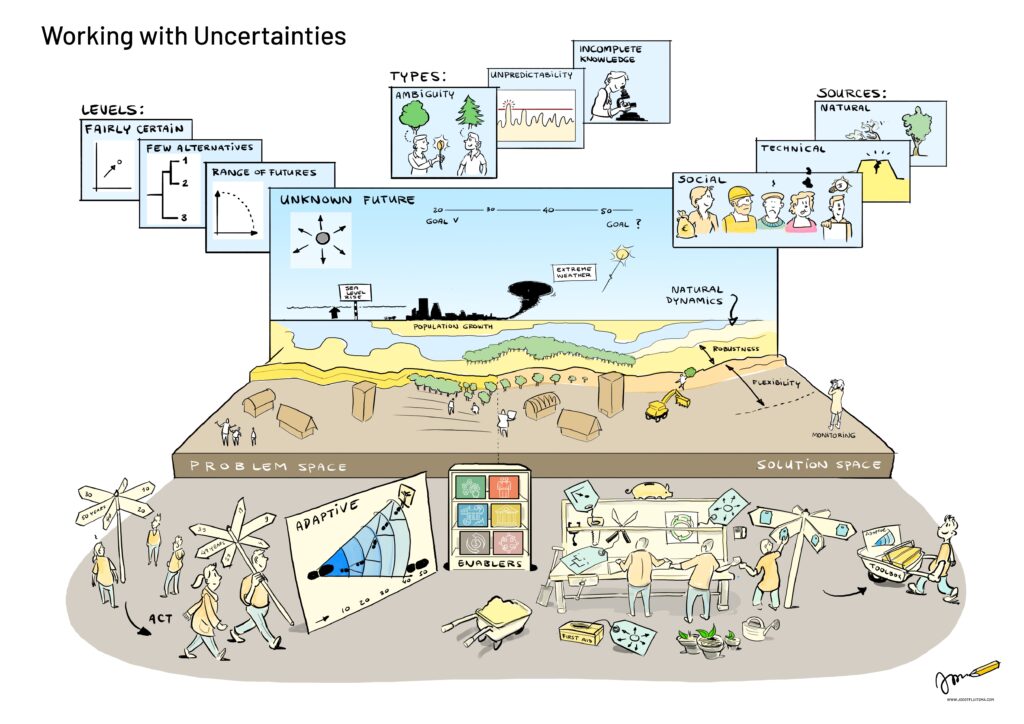Overview
Building with Nature designs are dynamic: they develop under changing (climatic) conditions. This requires an adaptive approach for management, maintenance and monitoring their performance. Key aspects to consider:
- Balancing initial efforts/investments (over-dimensioning) against adaptivity and resilience
- Making maintenance strategies an integral part of the development process
- Organization and techniques for adaptive management and monitoring to deal with natural dynamics in various time and
spatial scales
Building with Nature is inherently dynamic and the solutions evolve over time. This can be a strength since the development of natural elements in time often facilitate more robust and flexible alternatives to changing future conditions compared to traditional grey alternatives. However, the large-scale implementation of Building with Nature is hampered by the greater perceived uncertainty regarding the performance and implementation of Building with Nature compared to traditional alternatives. This enabler informs users on guidance for identifying and acknowledging uncertainties, decision-making for NBS for uncertain futures and setting-up an adaptive management approach.

The key element to deal with both is adaptivity. Traditional grey infrastructure has a well-defined, usually quite cost-effective yet inflexible performance prediction with regards to it design function and design life, without considering the (uncertain) effects of the intervention on the performance of the system that is often permanently altered. In contrast, Building with Nature embraces natural dynamics and thus grows with the system. Adaptive management, maintenance and monitoring might be required when the dynamic nature stirs the solution away from its performance; in those cases, additional steering might be necessary.
Identifying and addressing dynamics and uncertainties is important for successful Building with Nature design and implementation. The most successful strategy focuses on adaptation instead of on controlling these dynamics and uncertainties in the design, which includes the acknowledgement that not all uncertainty can be eliminated. The aim should thus never be to eliminate or minimise dynamics and uncertainty, but rather to formulate plans that recognise, respect and accommodate them and provide pathways to adapt to whatever future conditions emerge. In order to achieve this, it is important that planning commences from a common understanding of what constitutes uncertainty in these types of projects: the different types, sources and levels of uncertainty.
Within design and implementation, a balance has to be made between robustness and adaptivity. A more robust Building with Nature design might require less monitoring and maintenance, but is often associated with a larger initial investment or spatial need. At the other end, a very adaptive solution requires frequent monitoring and maintenance following a pre-defined adaptive management strategy. The main advantage is that the design can be adapted to (unexpected) changing (climate) conditions, as alternative pathways remain available.
